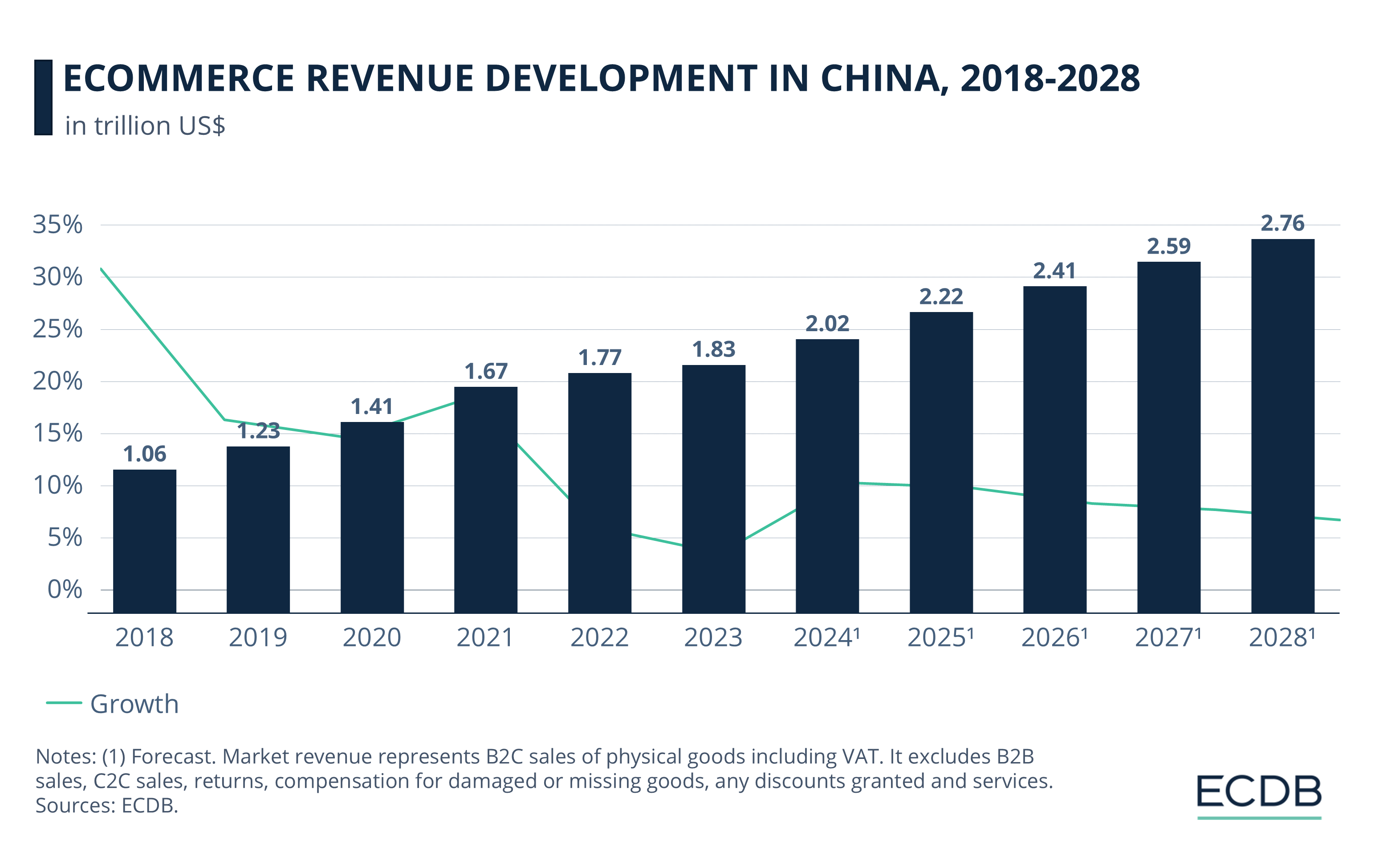eCommerce: Pricing
Price Wars in eCommerce: Causes, Effects & Winning Strategies
What drives price wars in eCommerce, and how can businesses navigate their effects on profitability and competition? Explore causes, impacts, and strategies.
Article by Cihan Uzunoglu | August 20, 2024Download
Coming soon
Share

Price Wars in eCommerce: Key Insights
Causes of Price Wars: Price wars in eCommerce stem from intense competition, lack of product differentiation, barriers for new entrants, inventory challenges, and consumer sensitivity to price changes.
Impact on Businesses: While price wars can attract new customers and clear inventory, they often result in reduced profits, financial instability, and long-term harm to brand reputation and industry profitability.
Strategies for Success: Winning a price war in eCommerce involves monitoring competitors, adopting dynamic pricing, offering value-added services, enforcing MAP (Minimum Advertised Price) policies, leveraging data-driven analytics, and focusing on non-pricing strategies to maintain margins and protect brand integrity.
Challenges in China: China's eCommerce market, once driven by aggressive discounting, now faces serious challenges as slowing sales and fierce competition squeeze profit margins, prompting major platforms to shift toward sustainability while small vendors struggle with unsustainable losses.
Why do some brands slash prices to the bone while others hold firm? What drives companies like Amazon and Walmart to engage in fierce price battles during events like Black Friday?
As eCommerce continues to change before our eyes, the tactics and strategies behind price wars have become crucial for survival. But are these wars sustainable, or are they actually leading the industry toward a breaking point? This is sometimes difficult to determine, but we definitely see the trend changing.
What Are Price Wars in eCommerce?
Like price wars in general, eCommerce price wars occur when online businesses continually lower their prices to attract customers and outbid competitors.
It starts when one brand drops its prices, forcing others to do the same. This is common in competitive markets where customers can easily compare prices.
Examples of eCommerce Price Wars
eCommerce price wars can occur between different online shopping sites or among sellers within a marketplace. Walmart and Amazon frequently engage in price wars, especially during major shopping events like Black Friday and Cyber Monday.
In 2020, for instance, Amazon’s “Holiday Dash” event led Walmart to launch three separate sales events both online and in stores, resulting in a fierce price competition across various product categories.
Price wars are also common among third-party sellers on a marketplace. In Amazon’s case, these wars often arise from the company’s repricing rules as sellers reduce prices to win the Buy Box.
Causes of Price Wars in eCommerce
What exactly causes price wars in the eCommerce sector?
High Competition and Market Concentration: In highly competitive industries or markets dominated by a few large companies with many smaller competitors, brands engage in price wars to eliminate rivals and maintain or increase market share.
Product Similarity and Lack of Differentiation: When products are similar and interchangeable, price becomes a key differentiator. Low product differentiation forces companies to compete on price, prompting reductions to attract customers.
Market Barriers and Entry of New Players: Established players lower prices to create cost barriers, making it difficult for new entrants to compete. Existing companies may also reduce prices to deter new competitors from gaining a foothold.
Inventory Management and Market Growth: Overstocked retailers cut prices to clear inventory, especially for seasonal items or products nearing the end of their lifecycle. Additionally, overly optimistic market growth forecasts can drive aggressive competition for market share.
Consumer Price Sensitivity and Competitive Response: When consumers readily switch stores for lower prices, companies engage in price competition to attract and retain customers. Businesses also consider competitors' potential reactions, balancing the benefits of price cuts against the fear of retaliation.
Effects of eCommerce Price Wars
Price wars can be a double-edged sword for businesses: While they can offer short-term benefits, they often lead to long-term economic damage, reducing overall industry profitability.
Below are both positive and negative effects on brands, retailers and suppliers:
Positive Effects
Price wars can draw in new customers and boost sales volume. In addition, brands that navigate price wars well can capture a larger market share by pulling customers from competitors.
Price wars also help retailers clear out excess inventory, making room for new products.

Negative Effects
Price wars often reduce profits, leading to financial instability. Small businesses may struggle to keep up and could be forced out of the market. Continual price cuts can also harm a brand's reputation, making it seem cheap.
Aggressive pricing might attract regulatory scrutiny. Consumers may get used to low prices and resist paying more later. Suppliers are pressured to lower prices, affecting their profitability, and must quickly adapt to changing demands. They also tend to cut labor costs, often resulting in workers being paid very low wages.
Valuable Insights: Our data-driven rankings are regularly refreshed to provide you with crucial insights for your business. Find out which stores and companies are performing will in the eCommerce space and which categories are topping the sales charts. Stay ahead of the market with our rankings for companies, stores, and marketplaces.
Strategies to Win Price Wars in eCommerce
Understanding how to avoid and win price wars is crucial for maintaining healthy margins and preserving brand integrity. Here are some key strategies:
Monitoring and Adopting Pricing Strategies
Regularly track competitors' prices, promotions, and market share. Use dynamic, value-based, bundle, psychological, competitive, and economy pricing strategies. Data and technology can help adjust prices based on market conditions and customer behavior.
Amazon uses sophisticated algorithms for dynamic pricing, adjusting prices in real-time based on demand, competitor prices, and market conditions.
Value-Added Services and Differentiation
Offer value-added services instead of lowering prices. Launch new features, expand markets, and partner with other businesses. Personalize services, offer premium products, and target different customer segments with tailored pricing.
Walmart offers value-added services like free two-day shipping, in-store pickup, and membership programs with exclusive discounts.

Leveraging MAP Policies and Avoiding Price Wars
Minimum Advertised Price (MAP) policies set the lowest price at which a product can be advertised, preventing retailers from undercutting each other and protecting profit margins. Focus on customer service, distinct products, and benefits like free shipping or loyalty programs to avoid price competition. Product bundling also reduces direct price comparisons.
Samsung enforces MAP policies across online retailers to ensure consistent pricing and prevent price wars among its resellers.
Data-Driven Pricing and Analytics
Use data to inform pricing strategy. Monitor competitors and analyze customer behavior to optimize pricing. Technology helps us adapt quickly to market changes, ensuring competitive yet profitable pricing.
Best Buy uses data analytics to adjust pricing strategies based on competitor pricing, customer purchasing behavior, and market trends, ensuring competitive yet profitable pricing.
Focus on Non-Pricing Strategies
Enhance factors like product variety, exclusivity, promotions, online reputation, reviews, shipping options, service standards, loyalty programs, and strong brand identity to avoid price wars.
Apple focuses on non-pricing strategies by emphasizing product quality, innovation, brand reputation, and a robust ecosystem of products and services, avoiding direct price wars.
eCommerce in China:
Unsustainable Price Wars
China's eCommerce market has dramatically shifted, with the once-thriving sector now facing severe challenges. The era of rapid growth, fueled by aggressive discounting and consumer-friendly policies, is giving way to a harsh reality.
Sales growth is slowing, and the fierce competition among platforms like Alibaba, JD.com, and Pinduoduo is squeezing profit margins across the board.
Small eCommerce Vendors Struggle
eCommerce vendors, particularly small businesses, are struggling to survive in an environment where extreme discounting and generous return policies have become the norm. These practices, once seen as growth drivers, are now causing significant financial strain.

For instance, the return rate on eCommerce platforms has skyrocketed to 60%, doubling from earlier figures. Vendors are forced to sell below cost to stay visible in search results during frequent discount events, leading to unsustainable losses.
Shifting Strategies of Major Retailers
Big platforms have also felt the pinch. Both Alibaba and JD.com have recognized the limitations of competing primarily on price. They are shifting strategies to create a more sustainable eCommerce ecosystem by reducing the emphasis on low prices and offering more support to merchants.
Douyin, ByteDance’s eCommerce arm, is also moving away from focusing on the cheapest products, instead aiming to offer "good items at good prices."
The impact of these price wars extends beyond individual businesses. Analysts warn of a potential deflationary spiral, where continuous price cuts lead to lower wages, reduced consumer spending, and a further decline in economic growth.
The current environment has led to a vicious cycle: as consumer confidence plummets, price becomes the dominant factor, further entrenching this destructive cycle.
Price Wars in eCommerce: Closing Thoughts
The eCommerce market, once a beacon of rapid growth, now faces a complex future shaped by economic shifts and evolving consumer behavior.
The pandemic accelerated online shopping, but the ensuing price wars have revealed the unsustainable nature of relentless discounting. As major players like Alibaba and JD.com pivot away from price-based competition, the next decade may see a more balanced approach, focusing on value and sustainability.
However, the sector's long-term success will depend on how well it adapts to changing consumer expectations and economic realities. The eCommerce boom might continue, but not without significant transformation.
Sources: MetricsCart, Anchanto, Forbes, Sniffie, Reactev, Medium, Vision Times, South China Morning Post, Asia Financial, Reuters: 1, 2, ECDB

Click here for
more relevant insights from
our partner Mastercard.
Related insights
Deep Dive
The Global B2B eCommerce Market: Why It Is Beneficial to Sell to Other Businesses
The Global B2B eCommerce Market: Why It Is Beneficial to Sell to Other Businesses
Deep Dive
eCommerce in Indonesia: Revenues Projected to Cross US$100 Billion in 2025
eCommerce in Indonesia: Revenues Projected to Cross US$100 Billion in 2025
Deep Dive
Top 10 Online Shopping Sites in the USA: Amazon, Walmart, Apple
Top 10 Online Shopping Sites in the USA: Amazon, Walmart, Apple
Deep Dive
eCommerce Market in China: A Maturing Market & Unsustainable Price Wars
eCommerce Market in China: A Maturing Market & Unsustainable Price Wars
Deep Dive
Otto: Can the German Retail Company Maintain Relevance and Drive Revenue in eCommerce?
Otto: Can the German Retail Company Maintain Relevance and Drive Revenue in eCommerce?
Back to main topics
